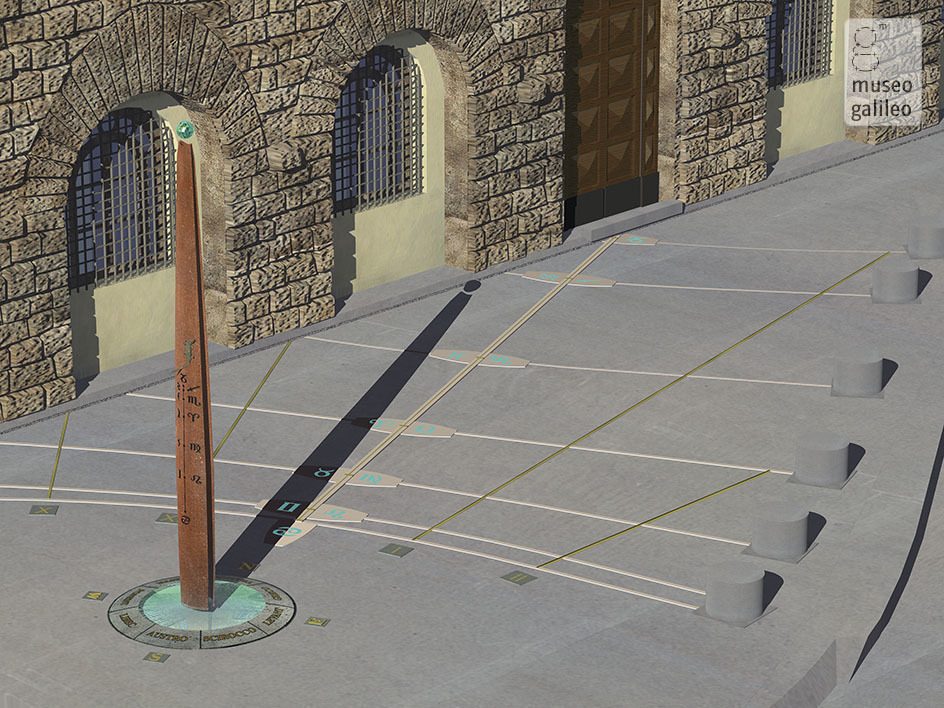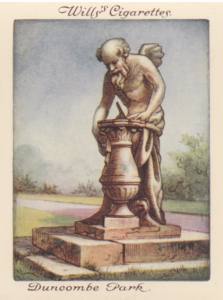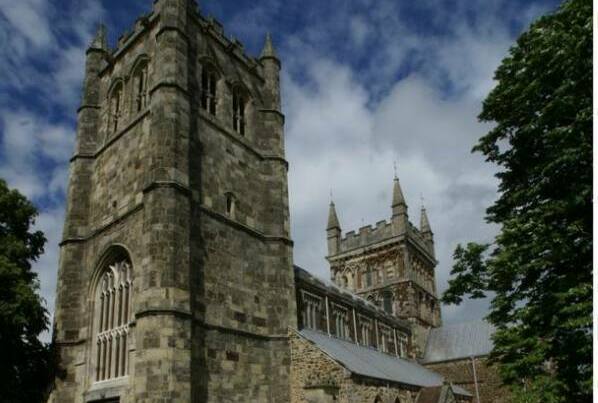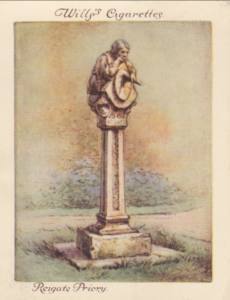This month we have a more modern structure for our ‘Sundial of the Month’. The Monumental Sundial which sits at the Museo Galileo in Florence, Italy. Restored quite recently in 2015, the Monumental Sundial was originally built in 2007 as a “mathematical ornament” for the museum.
The large sculptural structure comprises of a large quadrant traced on the pavement and a gnomon which is formed from two large bronze stelae (upright columns bearing commemorative inscriptions or relief design) that symbolize the day and the night.
The stele for the day, facing South, contains a vertical meridian line on which the shadow cast by the tail of a “liziper” – a half-lizard, half-viper imaginary animal – indicates midday for each period of the year.

The stele for the night, facing North, contains the representation of the two constellations that allow for finding the Polar Star, that is the Ursa Major and Ursa Minor. The wind rose placed at the base of the gnomon shows the directions for geographic orientation.
A travertine and brass meridian line is drawn on the pavement, flanked with glass and marble signs of the Zodiac. The meridian line extends for about 15 metres from the museum entrance, where the winter solstice is marked, to the base of the gnomon, where the summer solstice is marked.
The travertine curves crossing the meridian line indicate the date. The brass radial lines forming a grid with the two solstitial curves indicate the hours.
The seasons and the four elements are symbolized by the choice of materials: travertine for Earth and autumn; glass for Water and winter; grey stone for Air and spring; bronze for Fire and summer. After sunset, the sundial continues to act as an attractive sculpture thanks to the lighting under the base of the gnomon and in the Zodiac signs.






